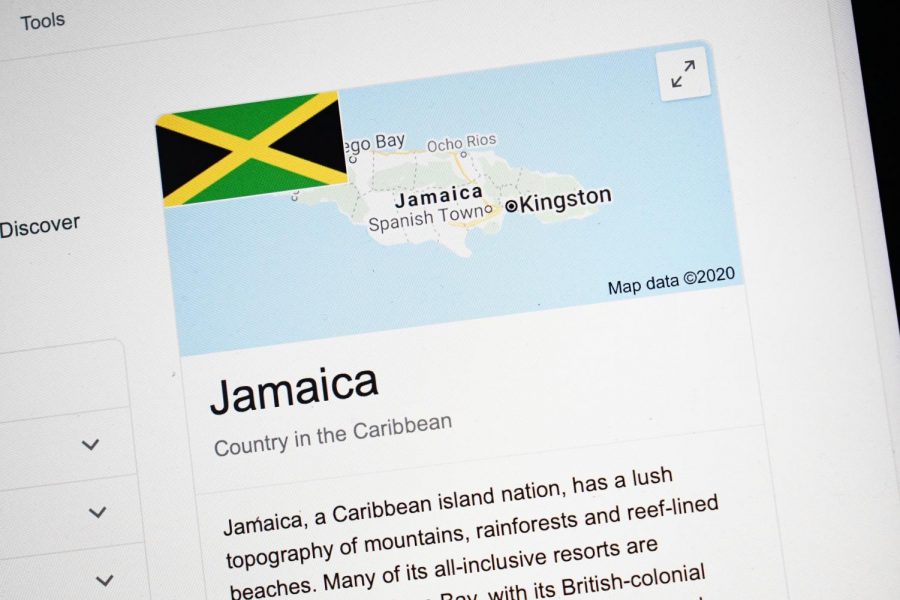Earthquake off of Jamaica and Earthquake Safety
EARTHQUAKE OFF OF JAMAICA SHAKES UP CIVILIANS. The 7.7 magnitude earthquake that shook Jamaica and surrounding islands exemplifies the need for proper earthquake safety.
February 26, 2020
On Tuesday Jan 28, a major earthquake struck the Carribean. An article by CNN reported that “a magnitude 7.7 earthquake struck about 80 miles offshore from Jamaica, shaking people in the Caribbean and as far away as Miami.” The earthquake was large enough to immediately impact the islands nearby and caused miniature tsunamis to form. The earthquake was intense enough to be officially considered a “major” earthquake by the Richter Scale (which determines the severity of quakes), which is capable of immense damage. The shaking was so immense, residents in Miami, who were 440 miles from the epicenter, felt a fraction of the power the earthquake yielded.
CNN reports the earthquake was a “strike-slip earthquake,” which are historically known for their low chances of producing substantial earthquakes. This is a cause for concern as the quake near Jamaica was anything but calm. Miraculously, there were no reports of major injuries or damage to buildings near the epicenter of the earthquake, but the possible dangers that came with the earthquake were real. Sophomore Jordyn Hirsch said, “It was a big earthquake so I think that it probably impacted the patterns or cycles [the people living near the epicenter] have.” Freshman Toke Hansen added to how the earthquake impacted the surrounding islands by saying, “Most likely the earthquake will cause trees to fall over and stuff. It won’t completely destroy the environment but it won’t be good.”
An article by GNS Science lays out all the lesser known dangers an earthquake brings such as tsunamis, landslides and rockfalls, subsidence and lateral spreading and liquefaction. Subsidence and lateral spreading is when the shaking causes the ground itself to change positions, either horizontally or vertically, leaving gaps in the ground which can have devastating effects on what is near the gap. Liquefaction meanwhile, is the product of when waterlogged sediment is shaken intensely, causing the grains within it to separate, which causes the ground to give way to pressure, which can cause sinkholes and fissures, as well as flooding.
With all of these possible dangers surrounding earthquakes, it is important for civilians to know how to react in case an earthquake strikes without warning. Christian Mullen from Sciencing says, “People that don’t have emergency plans in place might end up getting trapped, injured or even killed because of the aftermath of an earthquake. Even when people don’t get hurt by an earthquake, it can still have lasting effects on the psyche.” The value of having safety precautions and knowing what to do in an earthquake is invaluable, but not everyone is educated properly on what to do.
Senior Kirsten Romero says her earthquake safety ecompasses “what they teach us here, go under the table and protect your head… that’s all I know, that’s the thing though. I don’t know what to do [outside of school].” Hansen adds to this by saying, “I have no idea what to do in an earthquake. I’ve never even heard anyone try to explain it. I would have no idea what to do; go under a table?” The lack of knowledge on how to react to an earthquake is prominent and in a life or death situation, not knowing what to do might result in major injuries or death. The lack of knowledge often due to a lack of exposure to the concept of earthquakes. Hirsh, who is originally from California says, “They always go over the procedure in school. Get under something sturdy and get away from windows. I think they need to take more precautions in areas that are on fault lines and stuff because those are a lot bigger and not what we would experience here.”
The correct procedures are often taught in more earthquake prone areas such as California, but it is just as important for a resident there to know what to do in an earthquake as it is for a resident here in Washington. Junior Nishant Narayana says, “I feel like everyone should know [earthquake safety] and have it taught in schools in places that experience them, because that’s something that can happen, and if you don’t know what to do, you’re pretty bad off.” The importance of knowing what to do in case of an earthquake is monumental because even if it does not see as much activity as California, Western Washington is still an active earthquake zone, so all residents should be prepared in case an earthquake does strike. In fact, while Washington does not experience earthquakes often, it is the hotspot for “the big one.” The Cascadia fault line that runs through western Washington is on an unknown timer that could go off at any time. This means that a very large earthquake can strike at any moment, which gives even more reason to learn how to react in case you find yourself in the middle of an earthquake.
Maya Wei-Haas from National Geographic reports that before any earthquake, an emergency first aid kit should be prepared as well as knowing if your home meets all the safety standards to ensure it will not collapse. During an earthquake, she explains that people should, “Protect yourself as quickly as possible. In many situations that means remembering three actions: drop, cover, and hold.” First priority is covering your head, then it is advised to get beneath something sturdy and stay covered until the shaking subsides. After the shaking has stopped, feel for any aftershocks that might endanger you and check yourself for any injuries. If the earthquake was large enough, ensure you are elevated enough to not be affected by a possible tsunami. For more information on earthquake safety go to Red Cross’ or Ready.gov’s articles for specific details on what to do.
While experiencing a major earthquake like the 7.7 magnitude one off the coast of Jamaica is unlikely, it is always better to be prepared, so that hopefully, like the Jamaica quake, no one will be seriously hurt.



